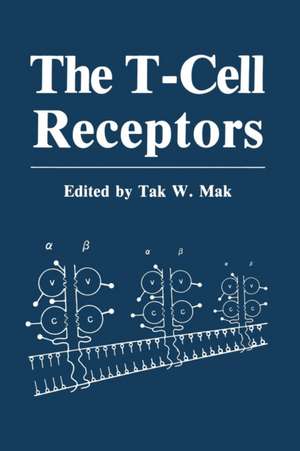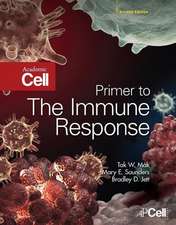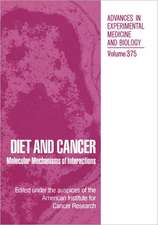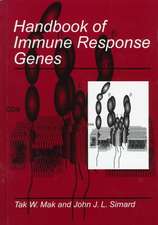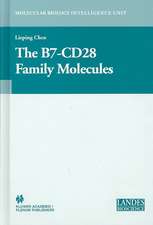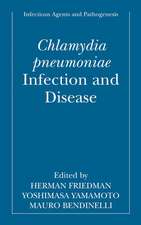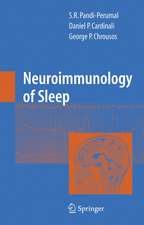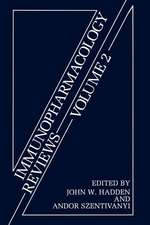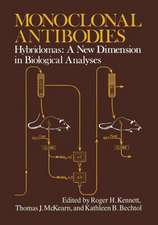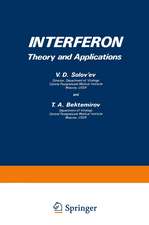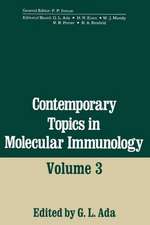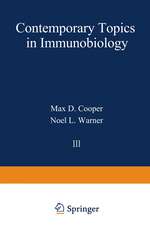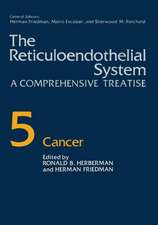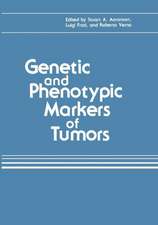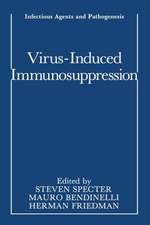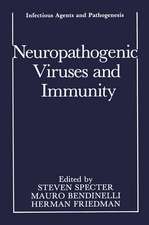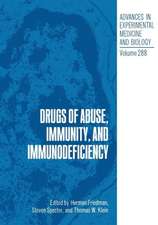The T-Cell Receptors
Editat de Tak W. Maken Limba Engleză Paperback – 14 mar 2012
Preț: 712.81 lei
Preț vechi: 750.33 lei
-5% Nou
Puncte Express: 1069
Preț estimativ în valută:
136.41€ • 141.89$ • 112.62£
136.41€ • 141.89$ • 112.62£
Carte tipărită la comandă
Livrare economică 14-28 aprilie
Preluare comenzi: 021 569.72.76
Specificații
ISBN-13: 9781468454086
ISBN-10: 1468454080
Pagini: 256
Ilustrații: XVII, 235 p.
Dimensiuni: 152 x 229 x 13 mm
Greutate: 0.35 kg
Ediția:Softcover reprint of the original 1st ed. 1988
Editura: Springer Us
Colecția Springer
Locul publicării:New York, NY, United States
ISBN-10: 1468454080
Pagini: 256
Ilustrații: XVII, 235 p.
Dimensiuni: 152 x 229 x 13 mm
Greutate: 0.35 kg
Ediția:Softcover reprint of the original 1st ed. 1988
Editura: Springer Us
Colecția Springer
Locul publicării:New York, NY, United States
Public țintă
ResearchCuprins
1 Introduction.- 2 The ? and ? Chains of the T-Cell Receptor.- 1. Introduction.- 2. The Genomic Structure of the T-Cell Receptor Genes.- 3. Rearrangement of T-Cell Receptor Genes.- 4. The Generation of T-Cell Receptor Diversity.- 5. The T-Cell Receptor Repertoire.- 6. T-Cell Receptor Diversity.- 7. Conclusion.- References.- 3 Immunoglobulin-Related Structures Associated with Vertebrate Cell Surfaces.- 1. Members of the Ig Superfamily.- 2. Igs and the Domain Hypothesis.- 3. Statistical Significance of the Similarities to Ig.- 4. Categories of Molecules in the Ig Superfamily.- 5. Gene Organization.- 6. Evolution of Structural Types in the Ig Superfamily.- 7. Possible Functional Derivation of the Ig Superfamily.- References.- 4 T-Cell Receptor Genes: Mutant Mice and Genes.- 1. Introduction.- 2. TcR ?-Chain Locus.- 3. Deletion Type Mutants.- 4. Nondeletion Mutants.- References.- 5 Thymic Ontogeny and the T-Cell Receptor Genes.- 1. Thymic Ontogeny.- 2. The T-Cell Receptor and Thymic Ontogeny.- 3. Thymic Leukemias.- 4. Conclusions.- References.- 6 The T-Cell Receptor/T3 Complex on the Surface of Human and Murine T Lymphocytes.- 1. T-Cell Receptors for Antigen.- 2. Antigen Recognition by T-Cell Receptors after the Establishment of Cell-Cell Interactions.- 3. The T Cell Receptor-T3 Structure.- 4. Organization of the Genes Encoding the T3 Proteins.- 5. Expression of the T3-Genes during Intrathymic Differentiation.- References.- 7 Role of the T3/T-Cell Antigen Receptor Complex in T-Cell Activation.- 1. Introduction.- 2. The T3/Ti Complex.- 3. The T3/Ti Antibodies Provide One Stimulus Required for Human T-Cell Activation.- 4. T3/Ti-Induced Hydrolysis of Polyphosphoinositides and Increase in the Concentration of Cytoplasmic Free Calcium.- 5. T-Cell Activation Induced by Solubleor Immobilized T3 MAb.- 6. The Role of Activation of Protein Kinase C for the Activation of Resting T Lymphocytes.- 7. Summary.- References.- 8 The Structure and Expression of the T-Cell ?-, ?-, and ?-Chain Genes in Human Malignancies.- 1. Introduction.- 2. T-Cell Malignancies.- 3. Technical Considerations.- 4. Rearrangement and Expression of the TcR Genes in Human Neoplasias and Related Disorders.- 5. T-Cell Malignancies.- 6. Observations.- 7. T-Cell Ontogeny.- 8. Conclusion.- References.- 9 The Involvement of the T-Cell Receptor in Chromosomal Aberrations.- 1. The Involvement of the T-Cell Receptor in Chromosomal Aberrations.- 2. The Burkitt’s Lymphoma Model.- 3. What is the Mechanism of Translocation in Burkitt’s Lymphoma and Other B-Lymphocyte Tumors?.- 4. The Chromosomal Locations of the T-Cell Receptor ?, ?, and ? Chains—Relevance to Chromosomal Aberrations That Highlight Regions of Genomic Activity in Differentiated Cells.- 5. Cloning Studies of Chromosomal Aberrations in T Cells.- 6. The Relevance of the Involvement of the T-Cell Receptor Genes in Chromosomal Aberrations of T Cells.- 7. Summary.- References.- 10 MHC-Disease Associations and T-Cell-Mediated Immunopathology.- 1. Introduction.- 2. Proposal.- 3. Host-Parasite Relationship: General Parameters.- 4. Supporting Evidence.- References.- 11 The ?-? Heterodimer: A Second T-Cell Receptor?.- 1. Cloning of the ? Chain.- 2. Genomic Organization of the ?-Chain Loci in Mouse and Man.- 3. ?-Chain Expression.- 4. ?? as a Possible Second T-Cell Receptor.- 5. Possible Function of the ? Receptor.- 6. Conclusion.- References.
